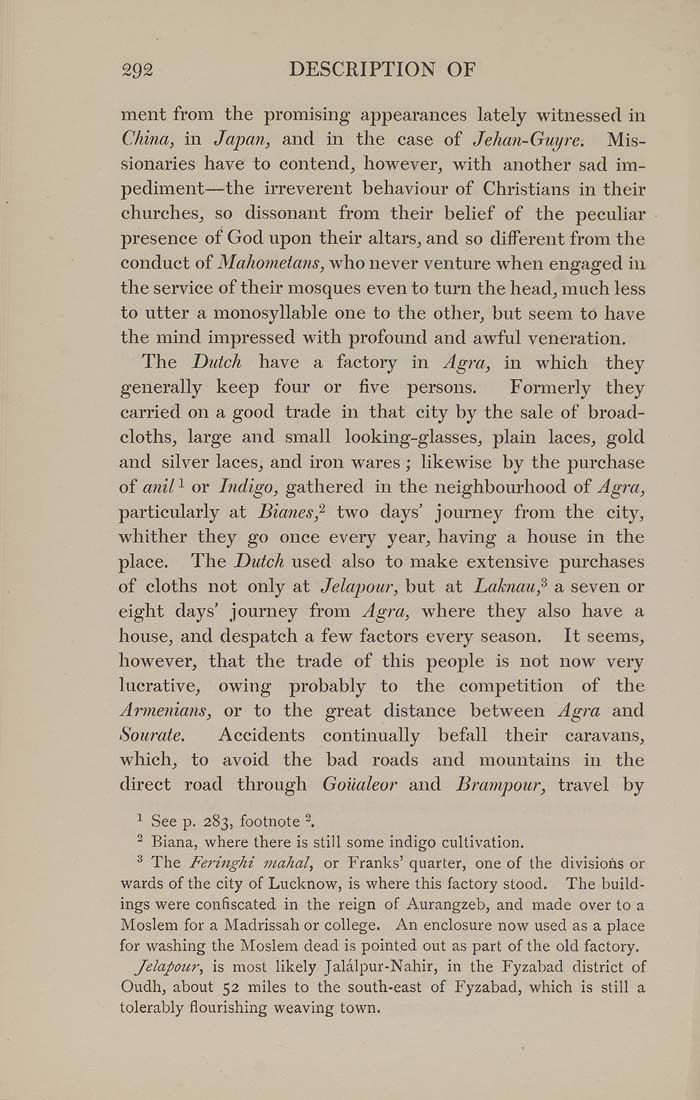292 DESCRIPTION OF
ment from the promising appearances lately witnessed in
China, in Japan, and in the case of Jehan-Guyre. Mis¬
sionaries have to contend, however, with another sad im¬
pediment—the irreverent behaviour of Christians in their
churches, so dissonant from their belief of the peculiar
presence of God upon their altars, and so different from the
conduct of Mahometans, who never venture when engaged in
the service of their mosques even to turn the head, much less
to utter a monosyllable one to the other, but seem to have
the mind impressed with profound and awful veneration.
The Dutch have a factory in Agra, in which they
generally keep four or five persons. Formerly they
carried on a good trade in that city by the sale of broad¬
cloths, large and small looking-glasses, plain laces, gold
and silver laces, and iron wares ; likewise by the purchase
of anil! or Indigo, gathered in the neighbourhood of Agra,
particularly at Bianes^ two days' journey from the city,
whither they go once every year, having a house in the
place. The Dutch used also to make extensive purchases
of cloths not only at Jelapour, but at Laknau,^ a seven or
eight days' journey from Agra, where they also have a
house, and despatch a few factors every season. It seems,
however, that the trade of this people is not now very
lucrative, owing probably to the competition of the
Armenians, or to the great distance between Agra and
Sourate. Accidents continually befall their caravans,
which, to avoid the bad roads and mountains in the
direct road through Goiialeor and Brampour, travel by
^ See p. 283, footnote ^.
^ Biana, where there is still some indigo cultivation.
^ The Feringhi mahal, or Franks' quarter, one of the divisions or
wards of the city of Lucknow, is where this factory stood. The build¬
ings were confiscated in the reign of Aurangzeb, and made over to a
Moslem for a Madrissah or college. An enclosure now used as a place
for washing the Moslem dead is pointed out as part of the old factory.
Jelapour, is most likely Jalalpur-Nahir, in the Fyzabad district of
Oudh, about 52 miles to the south-east of Fyzabad, which is still a
tolerably flourishing weaving town.
|








